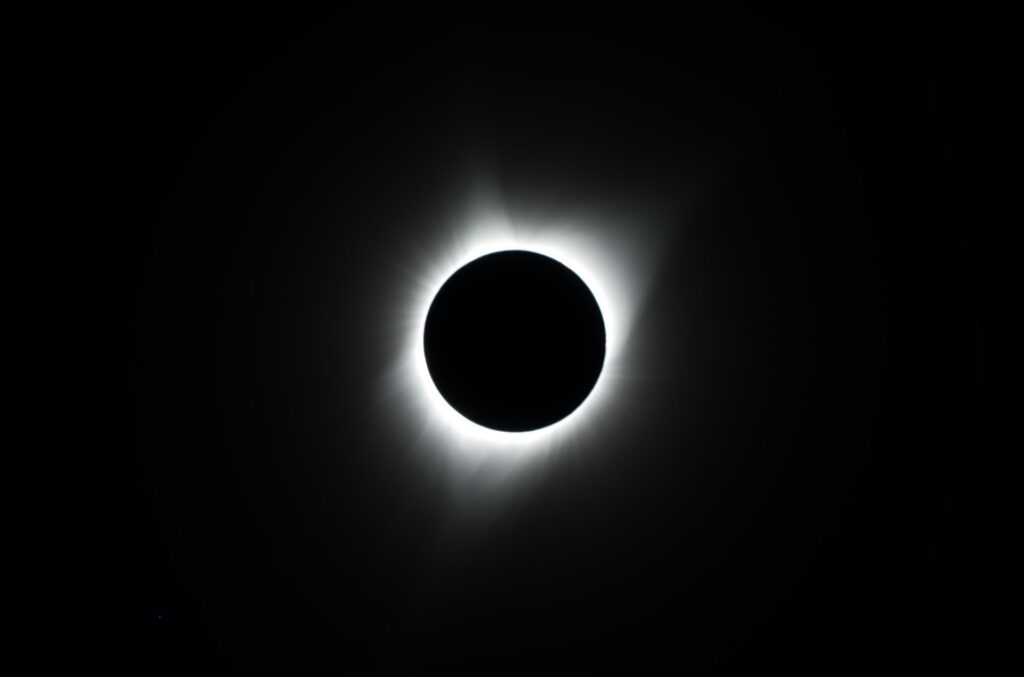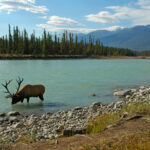Traveling during an eclipse, whether solar or lunar, can be a safe and exhilarating experience with the right precautions. Eclipses, astronomical events where one celestial body moves into the shadow of another, can create stunning visual phenomena and attract travelers from around the globe. However, safety considerations, especially during solar eclipses, are paramount to ensure a positive experience. Here’s a comprehensive look at what you need to know about traveling during an eclipse.
Understanding Eclipses
Before delving into safety, it’s essential to understand the two main types of eclipses: solar and lunar. A solar eclipse occurs when the moon passes between the Earth and the sun, blocking all or part of the sun’s light.
These can be total, partial, or annular. A lunar eclipse, on the other hand, happens when the Earth comes between the sun and the moon, and the Earth’s shadow falls on the moon.
Safety During Solar Eclipses
The primary concern during a solar eclipse is eye safety. Looking directly at the sun, even when it is partially covered by the moon, can cause permanent eye damage or blindness. Here’s how to watch a solar eclipse safely:
Use Eclipse Glasses: Special-purpose solar filters, such as “eclipse glasses” or hand-held solar viewers, must be used to view the sun directly. These glasses must meet the international standard ISO 12312-2 for safe viewing.
Do Not Use Regular Sunglasses: Regular sunglasses, even very dark ones, are not safe for looking at the sun.
Use Indirect Viewing Methods: If you don’t have eclipse glasses, use indirect methods such as pinhole projectors to observe the eclipse.
Traffic and Crowds
Eclipse events can draw large crowds, especially in areas experiencing a total solar eclipse. Increased traffic, crowded venues, and potential logistical challenges in small towns and rural areas can affect travel plans:
Plan Ahead: Book accommodations well in advance and arrive at your viewing location early to avoid traffic jams.
Stay Informed: Keep up with local news and traffic reports. Be prepared for last-minute changes in plans.
Weather Considerations
Weather can play a significant role in viewing an eclipse. Cloud cover can obstruct the view, especially for solar eclipses:
Have a Backup Plan: Choose a viewing location with clear skies historically, but also have an alternative plan in case of bad weather.
Stay Flexible: Be willing to move to a different location if the weather forecast changes.
Lunar Eclipse Viewing
Lunar eclipses are less challenging from a safety perspective. The eclipse can be viewed with the naked eye, binoculars, or a telescope without any risk of eye damage. The primary concern is finding a dark spot away from city lights to enjoy the best view.
Cultural and Local Considerations
In some cultures, eclipses are surrounded by myths and superstitions. While traveling, be respectful of local customs and traditions related to eclipse viewing.
Traveling during an eclipse can be a safe and memorable experience with proper planning and precautions.
Whether it’s a solar or lunar eclipse, the key is to prioritize safety, particularly eye safety for solar eclipses, and to be prepared for large crowds and potential changes in weather. With these considerations in mind, eclipse chasers can witness one of nature’s most awe-inspiring events in a safe and enjoyable manner.
Beyond the primary considerations of safety, logistics, and cultural sensitivity, traveling during an eclipse offers unique opportunities for personal growth and global connection. Here are additional aspects to consider to make the most out of your eclipse travel experience.
Educational Opportunities
Eclipses offer a hands-on learning experience about the cosmos, appealing to both adults and children. Many destinations hosting eclipse events organize workshops, talks, and interactive sessions with astronomers and experts. Engaging in these activities can enhance your understanding and appreciation of the astronomical phenomenon you’re about to witness.
Photography and Equipment
For those interested in capturing the eclipse, understanding the right photography techniques and equipment is crucial:
Research Eclipse Photography: Capturing an eclipse requires specific techniques and settings. Research and practice before the event.
Invest in the Right Equipment: A tripod, a camera with manual mode, and a special solar filter (for solar eclipses) are essential for capturing stunning eclipse images.
Practice Safety: If you’re photographing a solar eclipse, never look through the camera’s viewfinder without a solar filter. Use the camera’s LCD screen or viewfinder for framing your shot.
Emotional and Physical Well-being
The awe-inspiring nature of an eclipse can evoke strong emotional responses. Being prepared mentally and physically can help you fully embrace this experience:
Stay Hydrated and Nourished: Especially for eclipses that occur in remote or hot locations, ensure you have enough water and snacks.
Be Patient and Present: Large crowds and the excitement can be overwhelming. Take deep breaths, stay patient, and remain present to fully experience the moment.
Connecting with Others
Eclipse events often bring together people from diverse backgrounds with a common interest. They offer a unique opportunity to connect, share experiences, and make new friends from around the world.
Join Eclipse Groups: Online forums and social media groups can connect you with other eclipse enthusiasts.
Sharing tips and experiences can enrich your journey.
Participate in Local Events: Many communities host festivals, music, and cultural events around eclipses.
Participating in these events can provide a deeper understanding of the local culture and create lasting memories.
Leave No Trace
When traveling to remote or natural areas to view an eclipse, it’s crucial to respect the environment:
Follow Leave No Trace Principles: Pack out all your trash, stay on designated paths, and minimize your impact on the surrounding environment.
Respect Wildlife: Keep a safe distance from animals and do not disturb their natural habitats.
Traveling during an eclipse offers a profound way to connect with the majesty of the cosmos, learn about the world, and experience the unity of humanity under the grandeur of the universe. By approaching your eclipse travel with respect, preparation, and openness, you can ensure a safe, enriching, and unforgettable adventure.
Frequently Asked Questions (FAQ) About Traveling During an Eclipse
How often do eclipses occur?
Eclipses occur four to seven times a year, alternating between solar and lunar eclipses. However, the visibility of a total solar eclipse from any given location on Earth is rare, occurring approximately once every 375 years for the same spot.
Can I look at a lunar eclipse without protection?
Yes, it’s safe to look at a lunar eclipse with the naked eye. Lunar eclipses are safe to observe without any special eye protection because the brightness of the moon is not comparable to that of the sun.
What’s the best way to travel to an eclipse destination?
The best way to travel depends on the location and its accessibility. In many cases, driving may offer the most flexibility, especially if the area is remote. However, for distant or hard-to-reach destinations, flying to a nearby city and then renting a car or joining a tour may be the best option. Always consider local transportation options and traffic conditions.
Should I book my travel and accommodation well in advance?
Absolutely. Eclipse chasers often plan their trips years in advance, particularly for total solar eclipses.
Accommodations in the path of totality can sell out quickly, sometimes years ahead of the event. Early planning ensures you have a place to stay and increases your chances of securing a spot at organized viewing events.
Is it worth traveling for a partial eclipse?
While a total solar eclipse offers a uniquely dramatic experience, partial eclipses can also be intriguing to observe. If traveling to the path of totality is not feasible, experiencing a partial eclipse can still provide a valuable and memorable experience, especially with proper viewing equipment.
How long does an eclipse last?
The duration of an eclipse varies. A total solar eclipse, from the beginning of partial eclipse phases to the end, can last several hours, but the totality itself—the period when the sun is completely covered—usually lasts only a few minutes. Lunar eclipses can last several hours from start to finish, with the total phase lasting up to about an hour and a half.
Can eclipses affect animals or nature?
Yes, animals and nature can respond to the changes in natural light during an eclipse. Birds may stop singing, and some animals may behave as if it were twilight or night. Observing these changes adds another layer of fascination to eclipse experiences.
Are there health risks associated with viewing an eclipse?
The primary health risk is potential eye damage from viewing a solar eclipse without proper protection. There are no direct health risks associated with viewing a lunar eclipse. As with any outdoor activity, ensure you are prepared for the local weather and conditions to avoid other health concerns like dehydration or heatstroke.
Can I use my smartphone to photograph the eclipse?
Yes, but with caution. For solar eclipses, never look directly at the sun through your phone’s camera without a solar filter. For both solar and lunar eclipses, using a tripod and experimenting with your phone’s manual settings can improve photo quality. Remember, capturing the eclipse with high-end cameras or telescopes equipped with the proper filters will yield better results.
Traveling for an eclipse can be a monumental experience with the right preparation. Whether it’s your first eclipse or you’re an experienced chaser, each event offers a unique spectacle that serves as a profound reminder of our place in the cosmos.







